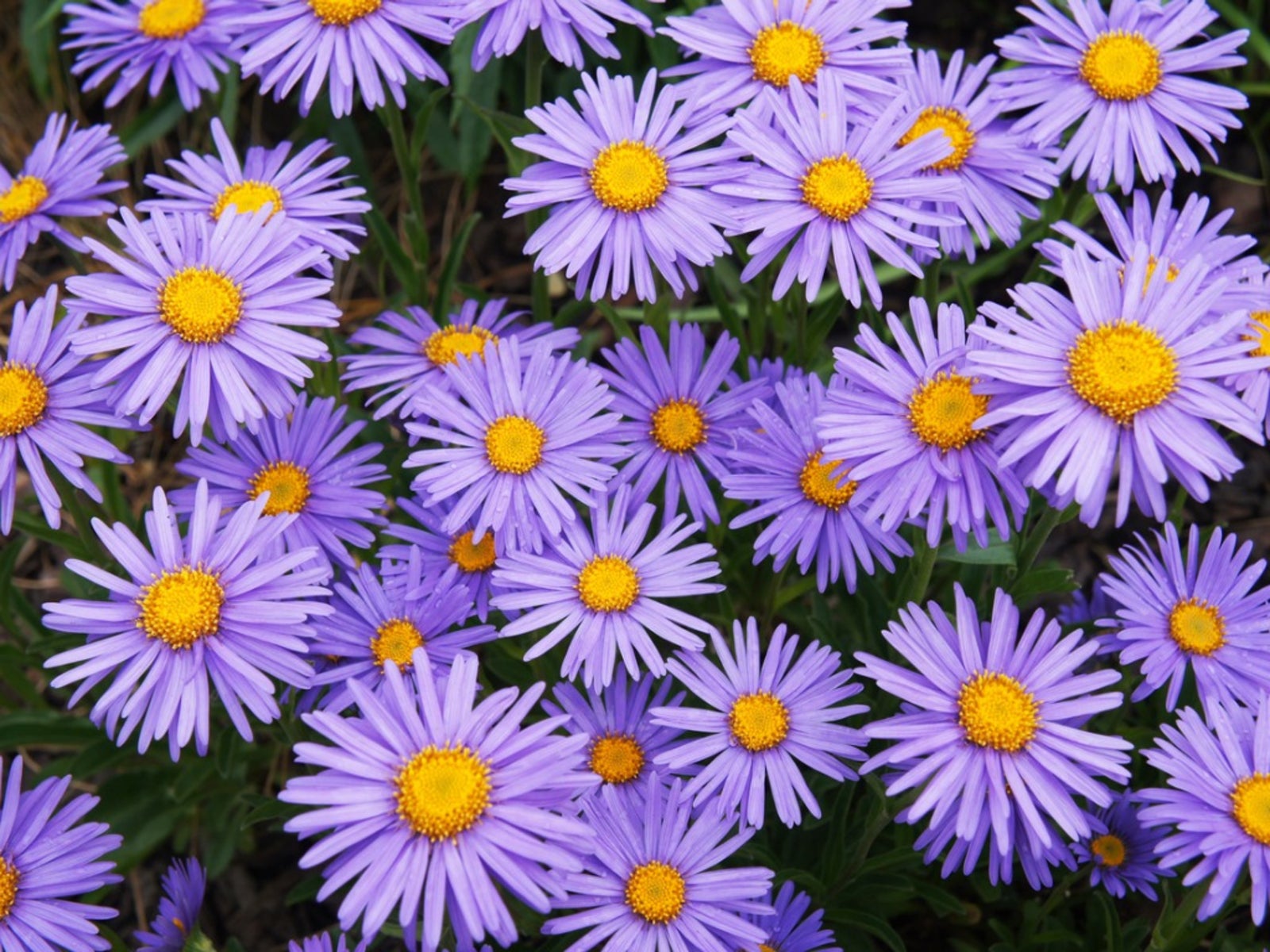Powdery Mildew Of Asters: Treating An Aster With Powdery Mildew


Powdery mildew on aster plants will not necessarily harm your flowers, but it doesn’t look very nice. This fungal infection feeds on asters and other plants, but it can be prevented and treated by minimizing the conditions that promote its growth and using fungicides.
About Powdery Mildew of Asters
Powdery mildew is caused by a fungus. There are several species that cause the infestation, each evolved to be parasitic on certain types of plants. That means that if you get powdery mildew on aster plants, it will not infect plants from other families. The fungus grows on the surface of leaves and reaches into cells to feed on nutrients. It needs the plant to be alive to grow, so it actually favors conditions that also favor the host plant. You can recognize aster powdery mildew by the white to gray powdery patches on the surface of leaves. They will spread and grow, eventually covering more of the leaf surface. The plant may stay healthy for a long time before the leaves finally dry and whither.
Treating Aster with Powdery Mildew
You can prevent a powdery mildew infection in your asters by creating conditions in which the fungus is less likely to grow. The most favorable conditions for the growth of powdery mildew include low light, moderate temperatures, and high humidity. You cannot necessarily control all of these factors, of course, but there are steps you can take to make it more difficult for the infestation to take root:
- Avoid getting the leaves of asters wet.
- Water only at the roots to minimize humidity around the plants.
- Clear out debris from the bed in the fall.
- Remove and destroy any foliage that is affected by powdery mildew as soon as you see signs of it.
If you notice signs of powdery mildew on aster early, you can probably manage the situation and prevent the fungal infection from spreading to other plants. If you can’t get the infection under control by managing the environment, you can try treating the affected plants with chemicals. Visit your local nursery or extension office to get the right kind of fungicide for powdery mildew. Apply the fungicide every ten days to two weeks. If you still struggle to control powdery mildew, you may want to clear out all the asters from the affected bed, destroy them, clean out the bed, and try growing asters again or put in another kind of plant that is not susceptible to the infection.
Gardening tips, videos, info and more delivered right to your inbox!
Sign up for the Gardening Know How newsletter today and receive a free copy of our e-book "How to Grow Delicious Tomatoes".

Mary Ellen Ellis has been gardening for over 20 years. With degrees in Chemistry and Biology, Mary Ellen's specialties are flowers, native plants, and herbs.
-
 Looking For Plants To Give You The Soft And Fuzzies? Try These 5 Fuzzy Leaf Plant Options
Looking For Plants To Give You The Soft And Fuzzies? Try These 5 Fuzzy Leaf Plant OptionsLovers of texture, drama, silver foliage and tactile plants will adore these special sensory garden additions. These fuzzy leaf plant options will leave you all aglow
By Susan Albert
-
 Get Ready For A Summer Of Hummers! Grow These Full Sun Hummingbird Plants and Flowers
Get Ready For A Summer Of Hummers! Grow These Full Sun Hummingbird Plants and FlowersIf you’re lucky enough to enjoy a sunny backyard, make sure you are maxing out on your pollinator opportunities and grow these full sun hummingbird plants and flowers
By Tonya Barnett